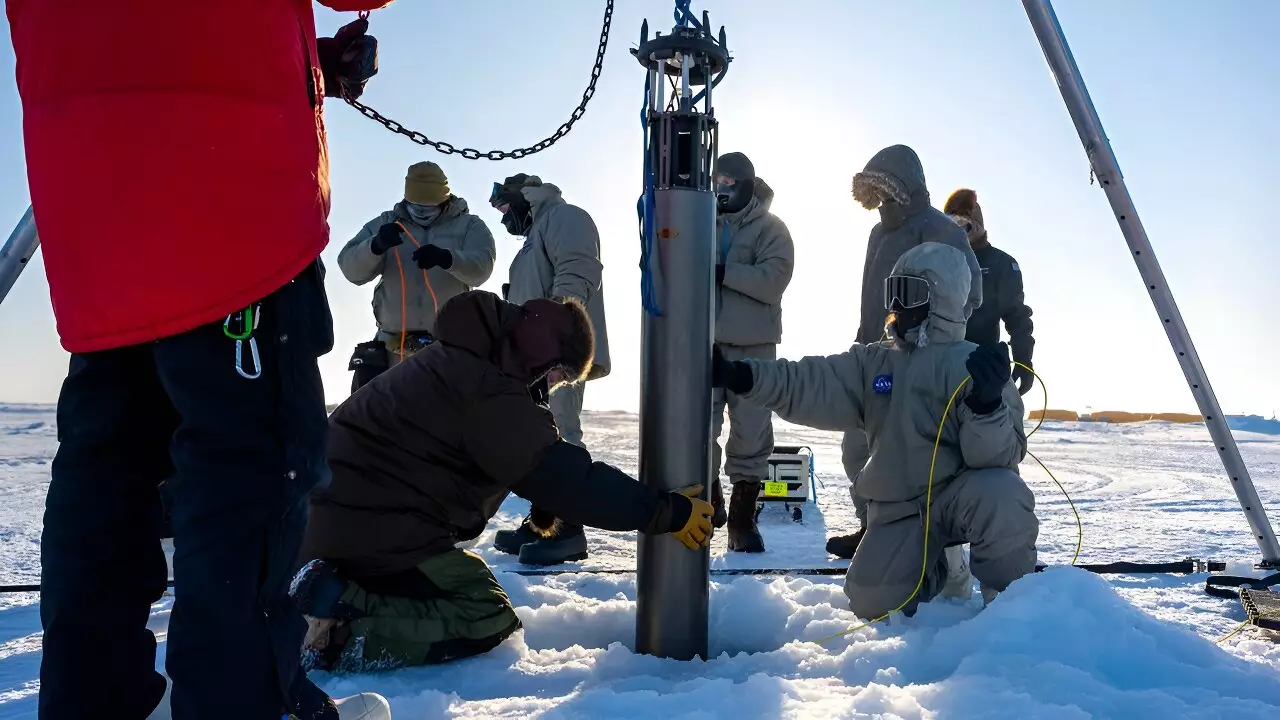Amidst the harsh sub-zero temperatures and unforgiving winds of the Beaufort Sea, engineers from NASA’s Jet Propulsion Laboratory (JPL) are taking significant strides forward in understanding one of Earth’s least accessible environments. Their innovative mission, known as IceNode, aims to deploy autonomous robots beneath the icy surfaces of the Antarctic and Arctic regions to monitor melting ice, an urgent endeavor as global sea levels continue to rise. The implications of their findings could have radical effects on climate predictions and policy-making concerning global warming and its ramifications.
At the heart of the IceNode initiative lies the compelling vision to construct a fleet of autonomous robots designed to traverse under floating ice shelves and measure crucial variables that contribute to ice melt rates. These measurements are particularly important in regions where conventional methods such as satellites fall short. Target areas include the mysterious “grounding zones,” where ocean, land, and ice interact. Here, warm ocean currents can erode ice from below, presenting significant repercussions for rising sea levels worldwide.
Initially, engineers put their prototypes to the test in the remote, icy environment of the Beaufort Sea. Using a tethered cylindrical robot lowered through a borehole in the ice, they gathered essential data on salinity, temperature, and water flow to ensure the technology functions effectively in frigid conditions. Ian Fenty, a leading climate scientist on the project, emphasized the importance of understanding the melting interface—the critical region where climate change interacts directly with existing ice masses.
Antarctica’s colossal ice sheet harbors enough frozen water to elevate global sea levels by approximately 200 feet (60 meters) if completely melted. This crucial fact underlines the pressing nature of the IceNode undertaking. Traditionally, calendar-based assessments of ice melt have overlooked the rapid changes occurring at the ice-ocean boundary. Thus, gauging accurate melt rates is imperative to refining climate models that predict imminent global challenges.
The limitations of current methodologies, ranging from satellites to direct human investigation, reveal a critical gap in data regarding these inaccessible environments. Marine heatwaves and rising surface temperatures are wholly intertwined with the melting landscape of ice, influencing not only geographical topography but also ecosystems across the globe. By meticulously documenting how ice interacts with ocean currents, IceNode stands to revolutionize our grasp of sea-level rise contributing factors, enhancing our understanding of future climatic scenarios.
The IceNode robots exhibit an innovative design, measuring eight feet in length (2.4 meters) and ten inches (25 centimeters) in diameter, featuring three-legged landing gear. This construction provides stability and the means to attach securely to the ice shelf’s underside during data collection operations, which can last for up to a year uninterrupted, relaying data back via satellite once the mission is completed. Notably, these machines are devoid of propulsion systems, relying instead on advanced programming that navigates ocean ecosystems using pre-existing data on ocean currents.
This design differentiation positions IceNode miles ahead of traditional measurement techniques. While conventional underwater devices typically rely on human intervention or elaborate aquatic vessels, IceNode’s autonomous systems provide an efficient alternative for collecting information in extremely dangerous environments, minimizing human risk whilst maximizing data collection capabilities.
The recent trials in the Beaufort Sea not only tested the prototype’s resilience under malice-like conditions—temperature plunging to minus 50 degrees Fahrenheit (minus 45 Celsius)—but also affirmed the feasibility of Arduino-based tools and sensors to retrieve accurate and vital data. The preliminary results signal a promising horizon for future deployments, with plans for subsequent tests across various polar regions anticipated in the coming years.
Fundamentally, the IceNode project not only propels technological innovation but also offers a pioneering approach to understanding dynamic ice-ocean interactions. As climate change looms larger on the global stage, the data extracted from this initiative could be instrumental in shaping future policy.
In sum, the IceNode project serves as a beacon of hope in an era where understanding the consequences of climate change is more crucial than ever. As researchers continue to navigate the complexities of ice melt and its open-water counterparts, the insights they gain from these autonomous robots could ultimately assist global leaders in making informed decisions, tackling climate change on both local and international scales. The outcome of such experiments could help humanity prepare for, mitigate, and respond to environmental challenges that threaten the very fabric of our ecosystems.

